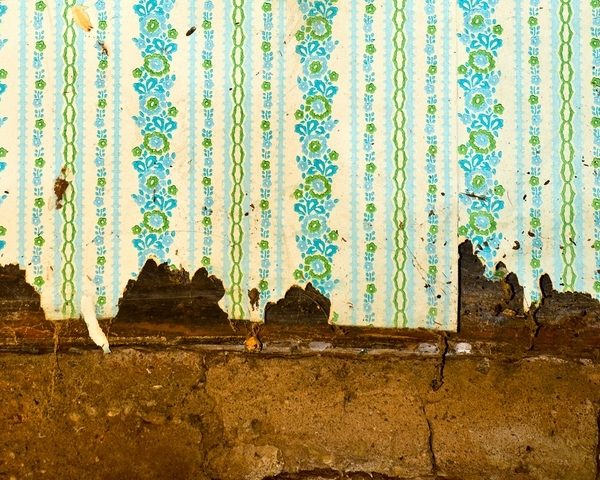
How to Keep Wallpaper From Peeling
Do you have colourful wallpaper that brightens your walls and adds texture to your home or business? Pretty amazing, right? It was a big job to put it up, but you are so excited now that it’s done. But what if it starts peeling? All that hard work has gone to waste.
What can you do? Here’s a guide on how to keep your wallpaper from peeling:
1. Fix Water Leaks

Wallpaper hates water, and when it comes into contact with it, you can have problems. Any roof damage that allows water to leak in or a leaky pipe behind the wall can make its way onto the wall and run down over the wallpaper. Water can stain and affect the seams and cause your wallpaper to start peeling away.
Ensure to inspect your roof every 3-6 months and keep debris off it. Watch for any water pooling on the floor as that may be a sign of water from the roof or leaking pipe. When you do find a leak, get it repaired ASAP.
2. Regulate Humidity

Having between 30-40% humidity in your home or business is ideal, but it can affect the wallpaper if it gets too high. You will start to see peeling from the joints and corners. It’s also a place that can trap mould.
Waterproof your building and make sure the ground slopes away from the foundation. Run a dehumidifier or air conditioner in the warmer months to keep the moisture in the air down, and keep your bathroom fan on if necessary.
3. Corner Guards

Corners stick out in hallways and rooms, and they are easy to hit as people and material navigate beside them. Corner guards are there for protection. They are essential in most workplaces like retail and commercial businesses and high-traffic buildings like hospitals and airports. You can also put them in your home.
Stainless steel or metal corner guards are quick to install and last for years, so your wallpaper will be protected for a long time. You can also get custom design options like company logos and stamped graphics to suit your needs. It takes one hit to a corner, and your wallpaper is damaged. Save yourself the frustration and time spent repairing your wallpaper by installing corner guards.
4. Prevent Pests

Termites love to get in your home and start eating, and if you have them on your walls behind wallpaper, they can damage it, leading to peeling and tearing.
Go around your building and seal any openings and cracks that pests can come through. This includes pipes, wiring around rooflines, and the foundation. Repair any torn screens on the windows and ensure the weather strips around the doors.
Check that no framing material has contact with the ground. There should be a barrier like concrete that the wood sits on. Don’t mulch or keep firewood up against the building like this. It’s food that attracts termites. They love moisture, too, so make sure your wall isn’t wet, and any roof drains have the water directed away from the foundation.
5. Install Wallpaper Correctly

While taking on a wallpapering job seems easy, you can have problems if it isn’t right. Uneven joints and bubbles can quickly turn into peeling from the seems. It is worth taking the time to apply it right the first time to have a professional do it.
Start with a clean wall, free of dust and debris. Take the time to lay out your walls with a level and calculate where your strips will meet. Prep your paper with paste or pre-pasted paper, run it through lukewarm water and take time hanging the first strip because that will be the guide that lines up everything else. Then work your way around the room, making sure that you brush and smooth out all wrinkles and bubbles.
You can use an adhesive syringe to squirt paste into any bubbles, so it is firmly glued and doesn’t spread. Smooth it down with a steam roller and wash it with a damp cloth.
Sometimes even when the job is done right, high-traffic areas and everyday movements have us coming into contact with corners. This can easily catch the wallpaper and cause it to tear or peel away, and before you know it, there is permanent damage—the solution corner guards.
6. Make Quick Repairs

The time to fix peeling wallpaper is as soon as you see it. You don’t want it to get worse, so make sure you have your repair supplies:
- Repair adhesive
- Seam roller
- Smoothing tool
- Sponge
- Small paintbrush
- Putty knife
Gently peel back the edges and apply your adhesive with a paintbrush or putty knife and firmly push the paperback in place, wiping away any extra glue. Smooth it out with your sponge or smoothing tool, making sure to get out all the bubbles. Then use your seam roller to tighten up the seal.
Nobody wants to have wallpaper peeling away from the wall so go through this checklist to eliminate any issues that may affect your wallpaper. Then you can add corner guards for extra protection, and you and your wallpaper will live a long, happy life.
